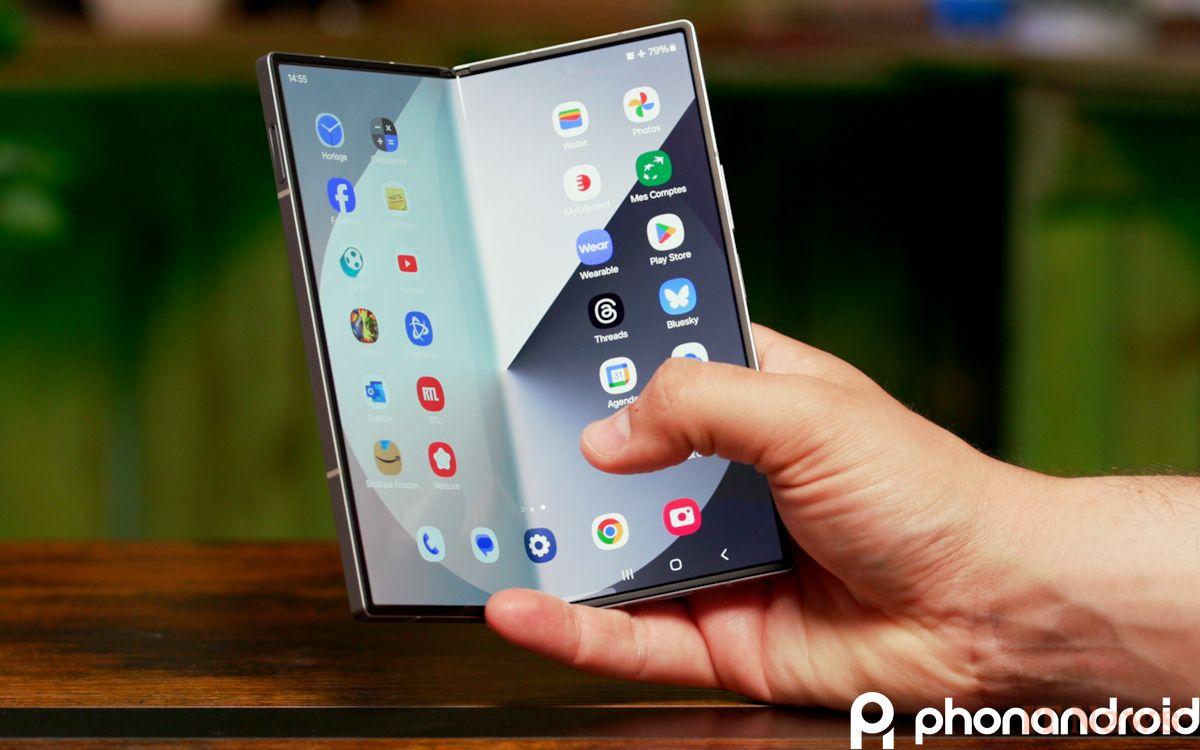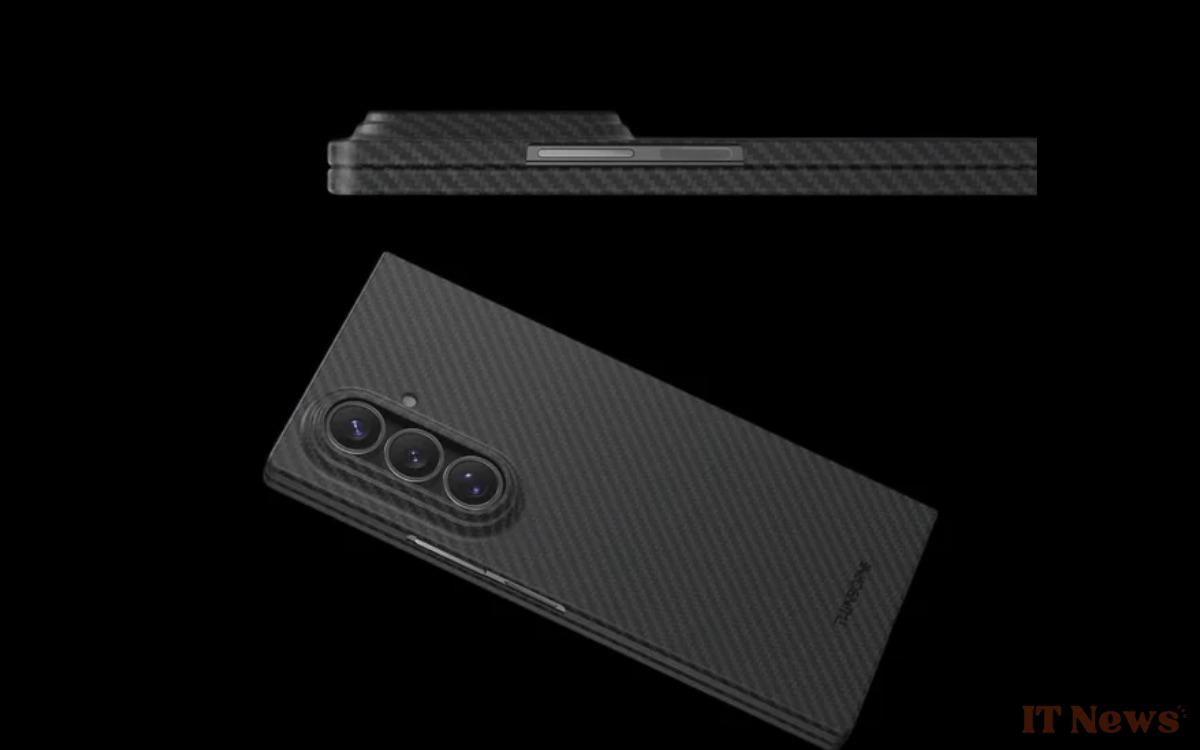Samsung is teasing a foldable smartphone that's thinner and lighter than ever. But new images reveal a less than perfect design reality. The Galaxy Z Fold 7 could well make a visible compromise to integrate a 200 MP camera sensor.
For several weeks, Samsung has been preparing the ground for the arrival of its Galaxy Z Fold 7. The manufacturer is promoting a device that's lighter and thinner than ever, so much so that it could become the thinnest foldable smartphone on the market. A teaser emphasized the refined silhouette and the quality of the materials, without revealing too many details. At first glance, the bet seemed successful.
But new leaked images change things a bit. They show the Galaxy Z Fold 7 protected by a case from the Thinborne brand, revealing a detail that the teaser didn't mention: a prominent camera block. This vertical module occupies a large portion of the rear panel. It clearly protrudes from the rest of the structure, contrasting with the thinness of the case. This choice is probably explained by the integration of a 200 MP main sensor, one of the largest on the market.
The Z Fold 7's 200 MP sensor forces Samsung to integrate a massive camera unit
The Galaxy Z Fold 7's camera unit houses three sensors: a 200 MP main lens, a 12 MP ultra-wide-angle lens, and a 10 MP telephoto lens with 3x optical zoom and optical stabilization. The 1/1.4-inch main sensor requires space, so it makes sense that the device would compromise on the uniformity of the back. On the front, there would be an improved under-display camera and a 10 MP sensor on the external display. The volume buttons and fingerprint reader are grouped on the right edge, as on previous models.
The Galaxy Z Fold 7 would also offer a titanium frame and IP48 certification. It should feature a Snapdragon 8 Gen 3 (Elite), up to 12GB of RAM, two AMOLED 2X displays (6.5 and 8 inches), as well as a 4400 mAh battery compatible with 25W and Qi2 charging. The smartphone will launch with Android 16 and One UI 8.0, with 7 years of updates guaranteed. Despite its promises of finesse, the latter could well stand out... because of its camera block.





0 Comments